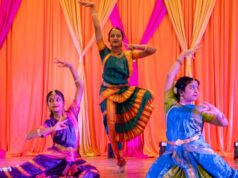The Zoroastrian Trust Funds of Europe (ZTFE) commemorated the 75th anniversary of Victory in Europe Day or VE Day in London, by following the national two minute silence at 11am on 8 May. At 11.15am, the resident priest at the Zoroastrian Centre, Ervad Yazad T Bhadha commenced reciting the Stum-no kardo in front of the fire in the Setayash Gah, to remember those who served and sacrificed their lives during WWII. This was followed by the Thanksgiving ceremony to mark the 75th anniversary of VE Day, when WWII finally ended after the surrender of the Armed Forces of Imperial Japan.
The Zoroastrian Centre in Harrow, London is closed right now, but members are hopeful that the government’s restrictions will be relaxed by the 15th of August, and that would be a good day to commemorate the enormous contributions of the Zoroastrian Parsi and Irani Community while serving the British Armed Forces during the two World Wars.
“Many Zoroastrians voluntarily served Great Britain, and the Commonwealth during WWI and WWII in Europe, in India and the Far East,” said Malcolm M Deboo, the ZTFE President in London. He mentioned four Zoroastrian Engineer Brothers who served during WWII in the RAF and IRAF, with distinction. Three of the Engineer Brothers were awarded the DFC and their photographs are displayed at RAF Cranwell.
“Besides those mentioned on the Zoroastrian War Memorial in Kharaghat Colony Mumbai, there were Captain Sam M Manekshaw MC, Major Genral Sir Heerajee, JM Cursetjee KCIE, CSI, DSO, Col Nasservanji D Bilimoria from Madras Regiment, Dasturji Dr Sorabji H Kutar from Eight Army, Commander Keki H Patell, Captain Rusi Bahadurji, Squadron Leader Jamshed D Italia, Homi Dordi and Hoshang Khambatta – RIAF,” he confirmed.

Malcolm recalled that his grandfather had served in Imphal along with other Parsis. Ervad Homi Dordi, Sam Manekshaw MC together with other Indians, Africans, Chinese, British, Australians, Americans served in the Burma Campaign and successfully repelled the Japanese, he said.
The young Ervad (Dr) Sorabji H Kutar was in the UK in September 1939, when WWII was declared. After joining up, he was with the Eighth Army in North Africa under Field Marshal Montgomery, then moved onto Italy – serving as an army surgeon at the Battle of Monte Cassino – and all the way to Germany. Later Dr Kutar was appointed by the ZTFE as the first and only High Priest of Zoroastrians of the UK and Europe.
One of the highest ranking Indians during WWII was Major General Sir Heerajee Jehangirjee Manekjee Cursetjee KCIE, CSI, DSO, who in the 1960s served as a ZTFE Managing Committee Member. In 1941 he was appointed Honorary Surgeon to King George VI.
During WWI Captain Cursetjee served with the 14th Ferozepore Sikhs, one of the oldest regiments in the Indian Army today. His medals, dog tags, and other personal items are exhibited at the National Army Museum, Chelsea.
Zoroastrian doctors and surgeons have served the British Armed forces before WWI and continue to do so in modern times. They have served in the Falklands, Operation Desert Storm, Afghanistan, and Iraq.
Sadly, there has not been enough mention or documentation of their contributions in the history of the World Wars. Marzban Jamshedji Giara, a Zoroastrian Parsi, Irani Community Historian and Author wrote a book “The contribution of the Parsi community during the First World War (1914-1918)” and is working on his his next book, documenting Zoroastrian Parsi/Irani contributions during the Second World War (1938-1945).
Till then, we can gather stories through the surviving relatives of those brave soldiers, who laid their lives to stop hatred and fascism in the world, and served the British Army in the highest order held by native officers.
Smita is a multi-cultural freelance journalist, writer, and filmmaker based out of the US, London, Hong Kong, and India. Global Indian Stories is her brain-child. Created to chronicle diaspora stories written by Indians of all age groups, from different walks of life across the globe, Smita makes sure that the platform remains inclusive and positive.


![Powerful Pride documentary Legendary Children [All Of Them Queer] streaming very soon](https://globalindianstories.org/wp-content/uploads/2025/06/Legendary-streaming-release-featured-238x178.jpg)



![Powerful Pride documentary Legendary Children [All Of Them Queer] streaming very soon](https://globalindianstories.org/wp-content/uploads/2025/06/Legendary-streaming-release-featured-100x75.jpg)

